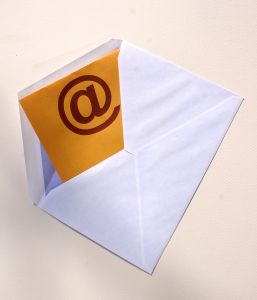How many emails do you have in your inbox right now? Are you an inbox zero freak like me? Or do you have emails piled up and unread that you’re hoping you’ll get time to get to? I’m not judging – I used to have as messy an inbox as anyone. And even now, if I go on vacation or don’t check my email for too long, I can get in a heap of trouble: the email piles up, and it can be a real chore getting back to my empty inbox. I’ve got a few tips up my sleeve though to make dealing with email a little less painful – and I’ve found the best defense is a strong offense. In this article, I’m going to give you some concrete tips and examples to reduce the number of emails in your inbox instantly – and help you keep it that way long term with the use of filters.
What Are Email Filters?
Email filter is like my own little army single purpose email virtual assistants. You tell each one to check each email for a specific set of things and then tell it a specific action to do with it. Some criteria you can check on include:
Who is it from? Who is it to? What words are in the subject? What words are in the body?
Some actions you can typically take are:
Delete it Mark it as read File it somewhere Send an automated response
I use GMail and I know Outlook (and most desktop program) have this capability, you’ll have to check with your webmail provider for how it’s done. With that brief introduction, here are the five types of emails I always filter.
1. Email Newsletters
Any blog I sign up for, any marketing email list – the very first thing I do after confirming my subscription is I set up a filter to automatically filter this into a “ToRead” bucket. I do this two ways:
2. Friends Forwarding Me Articles
I have a friend who constantly sends me political articles from a handful of websites. In spite of anonymously emailing them from http://stopforwarding.com/ as well as telling them in person, they won’t stop. I don’t want to filter all their emails, since occasionally they email me with something legitimate (a non-forward). So I filter them based on sender and checking for a handful of websites in the body of their email. I do this with a lot of people, and it helps separate the junk they want to send me from the real conversations we’re having. Every week or so I’ll take a look at my “Review Weekly” and see these emails in there – and usually just delete them.
3. Comment and Ping Notifications on my Blog
I’ve got a full time job, and while I take my blog seriously, I don’t need to be seeing all the comments and trackbacks instantly. I try to get to them every day or every few days, but I don’t want them clogging my inbox. I filter these into a folder that I try to review nightly – but if I can’t get to it nightly, no big deal. When I do get to it, I try to batch process them for at least 30 minutes at a time, visit everyone who has linked to me, perhaps leave a comment – and reply to the people who have been gracious enough to comment on my blog.
4. Facebook/Twitter/Social Media Notifications
I don’t need to know right away when someone follows me, friends me, directs messages me, etc. I usually check social networking and media sites at least once a week anyway, and can process the notifications at that time. For a while, I filtered all these and then checked them at my convenience. For the most part though, now if I check the site often enough (like I do with Twitter and Facebook) I just turn off the email notifications altogether.
5. Store Promotions
I like hearing about the latest deals and specials, but there is no reason this needs to interrupt my normal daily workflow. I looked at it, and realizedI might purchase something from one of these newsletters once a year – if even that frequently! So I filter all of them into a “Review Optional” folder – and if I have time, I’ll browse them at my leisure. If not – no big deal, I just delete them every couple weeks.
OK, I Have My Filters – Now What?
Once you’ve created some of these filters, GMail (what I use) has an option to immediately run them on whatever you’ve got in your inbox. Use this to instantly filter low priority items away so you can focus on what’s important. Going forward, your filters will be applied to any new email that comes in. This will keep your inbox clean so you can read the relevant, important emails first, before you head to your folders to deal with these low priority emails that may still be important to you – but don’t require as quick a response.
